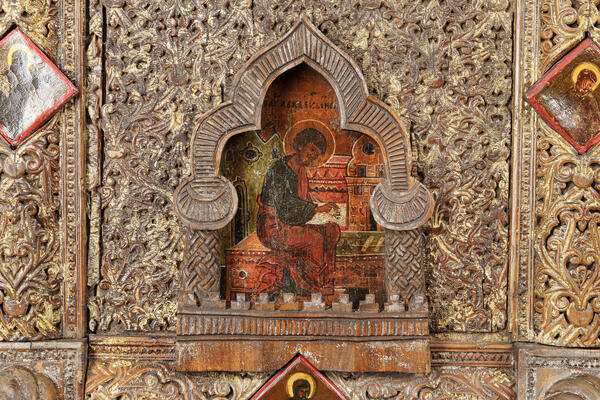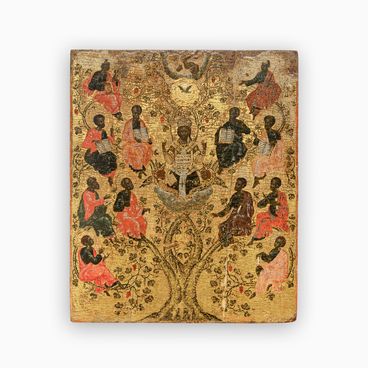The Royal Doors are the central doors of the iconostasis, a special partition with icons standing on it, separating the altar part of the church from other areas. The altar is the symbolic center of the church, and the attention of the worshipers is focused on it during the divine service. What happens behind the altar barrier is hidden from the eyes of the parishioners.
The term “royal doors” appeared due to the fact that, according to church tradition, Jesus Christ, the King of Glory, invisibly passes through these doors during the Eucharist. They are also called “holy doors”, “beautiful doors” or “royal gates”.
The Royal Doors depict the scene of the Annunciation of the Blessed Virgin Mary and feature images of the four apostles who wrote the Gospels: Matthew, John, Luke and Mark.
The iconostasis with the Royal Doors in its current form was developed by the 14th–15th centuries. The Royal Doors symbolize the gates leading to the Kingdom of Heaven. The doors are opened and closed during certain moments of worship. In the first week after Easter, all divine services are held with the gates open — as a sign that the Resurrection of Christ has become a victory over death and His Kingdom has reopened to people.
Only clergymen are allowed to pass through the Royal Doors.
The Royal Doors are the most beautiful and ornate part of the iconostasis. Most commonly, they are made of wood, which allows the carvers to embody any artistic idea: carvings, gilding, all kinds of decorations that give the Royal Doors a solemn appearance.
In general, the iconography of the Royal Doors seeks to lead people to the path of salvation, which can lead to the Kingdom of God. This path begins with the Good News of the birth of Christ and is revealed in the Holy Gospel.
These doors were discovered by the curator of the Russian Heritage Museum Ivan Fyodorovich Barshchevsky in the attic of an abandoned church during an expedition to the Novgorod Governorate. These are the only Royal Doors from the museum’s collection which have been preserved perfectly. Their shape is very architectural. The doors are decorated with intricate, small carvings, while acanthus motifs are featured on the top part. The design echoes some elements of Byzantine art, and the miniature painting is subtle and expressive, characterized by soft color schemes.





